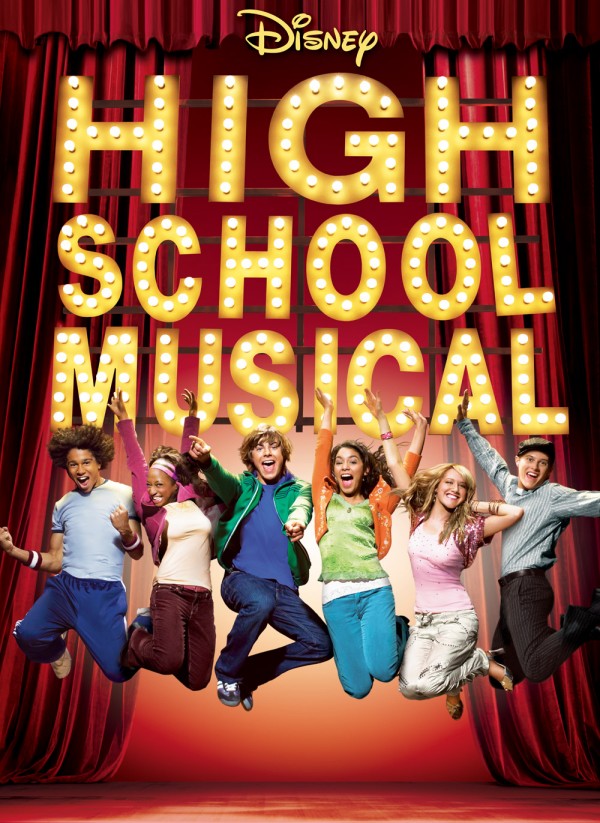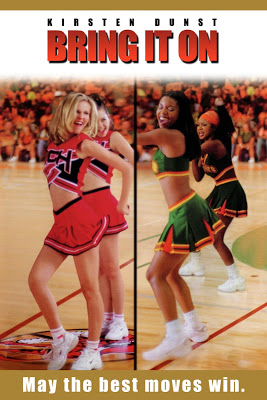Written by Max Thornton.
First things first: I am not here to argue that the High School Musical franchise is a feminist triumph. But I continue to believe that popular cultural products beloved of young women and girls receive an inordinate amount of vitriol because of misogyny, and that they merit close and generous examination for the retrieval of positive messages.
(At least, that’s what I tell myself to justify my love of One Direction.)
The first time I saw High School Musical, I classified it as “basically Grease with worse songs but a better message,” and that holds true. As the RiffTrax snarks: “At last, a high school movie that tackles the issue of cliques.” But let’s be real, there are an awful lot of teen movies out there with pretty terrible messages (like, um, Grease), and HSM isn’t actually one of them.

Sure, it’s cheesier than a four cheese pizza with extra cheese, setting up potential conflicts only to resolve them through ~the power of friendship~ ten minutes later. And sure, it has plot holes you could drive a bus through. My personal favorites are (1) the notion of theater nerds being obsessed with punctuality and (2) the fact that antagonists Ryan and Sharpay are in every way demonstrably better performers than the heroes Troy and Gabriella. (In fact, they are such breakout characters that Sharpay even has her own spinoff movie, Sharpay’s Fabulous Adventure, which, the montage of two dogs falling in love to a Justin Bieber song notwithstanding, undoubtedly has the most narrative cohesion of any film in the High School Musical franchise.)
However, let’s take our cue from Johnny Mercer and ac-cent-tchu-ate the positive. Latina Gabriella’s friendship with African-American nerd Taylor ensures that the film easily passes both the Bechdel test and the race equivalent. Then there’s the fact that, as a Tumblr post that eludes my search skills put it, the master narrative is that of a rom com about a popular boy “giving up his swag” to be with a nerdy girl. Of course, this is Disney at its Disneyest, so even the nerdy kids are bright-eyed and pimple-free, but it’s still essentially a gender inversion of a common trope.
Plus, the film kind of takes the hoary message about being true to yourself to a logical endpoint by being so ridiculously optimistic about the consequences. Standout number “Stick to the Status Quo” is all about kids reinforcing a system that disadvantages them because it’s all they know. The homework enthusiast who loves hiphop, the basketballer player who bakes, the stoner (/skateboarder, because this is Disney) who plays the cello – all are shouted down by their fellow students who want them to remain within their boxes. And yet surely nobody is fully defined by a single interest. Even the nameless masses of kids who insist that their bolder peers “stick to the stuff you know” must have other hobbies, pastimes, passions, facets to their personalities; but they are so invested in the clique system that they insist upon it, even when they logically should not. I’m not going to suggest that this is a trenchant critique of repectability politics and systems of normativity, but it is an illustration of how these things work. The system’s greatest trick is its internalization by those who suffer under it.
[youtube_sc url=”https://www.youtube.com/watch?v=ZYZpZr3Cv7I”]
This being Disney, as the RiffTrax says, “high-schoolers’ secrets are ‘I like rap,’ not ‘Dissecting the fetal pigs gave me a boner.’” Everyone is afraid that doing something different will make their friends dislike them; their friends are jerks (“worse than jerks… mean jerks,” as Taylor The Academic Decathlete so incisively expresses it) for all of ten minutes before feeling bad, apologizing, and joining forces to enable the lead characters to excel at a truly implausible number of extracurriculars. In a corny, contrived way, the film presents a world in which being yourself really is the best option. Admit to your secret love of singing, and not only will your jock buddies accept you, they will actively scheme to enhance your time-management skills. Within the schema of the “be yourself” story, it’s at least consistent to the notion that being yourself always makes life better – even if it does this in a hopelessly rose-tinted manner. If the message of your fictional story is “things will be best if you are always true to yourself,” it makes logical and moral sense for your protagonists to get to have their cake and eat it once they have learned this lesson.
It’s also pretty easy to read this film as a coming-out story in disguise. The jock is concerned that his love of musical theater will alienate his teammates and his jock dad? Yeah. OK, it’s a stereotype, but what in this movie isn’t? Plus the movie goes out of its way to code Troy and Gabriella’s relationship as nonsexual: they bond over the idea of being in kindergarten, they never actually kiss until the sequel, their rival counterparts are a literal brother and sister (the brother of whom is as gay as you could get in a Disney Channel original film)… On one level, of course, this is simply a rather extreme version of boy-band attractiveness rendered as non-threatening, desexualized cuteness – being a 90s kid, I still think of Hanson as the zenith of such things – but the queer reading can certainly coexist. (Note also that gay-coded musical theater enthusiast Ryan and scoffing dudebro jock Chad inexplicably show up wearing each other’s clothes in a scene in High School Musical 2.)

A major philosophical concern of recent decades has been the coexistence of unity and diversity. How do we balance our commonalities as human beings and our differences as individuals? As complex and difficult as this topic often gets, I ultimately can’t express it more succinctly than the lyrics to “We’re All In This Together”:
“We’re not the same, we’re different in a good way.”
_________________________________________
Max Thornton blogs at Gay Christian Geek, tumbles as trans substantial, and is slowly learning to twitter at @RainicornMax. He wrote this piece for his partner, because it’s their anniversary and they watched High School Musical on their first date. Romance!









